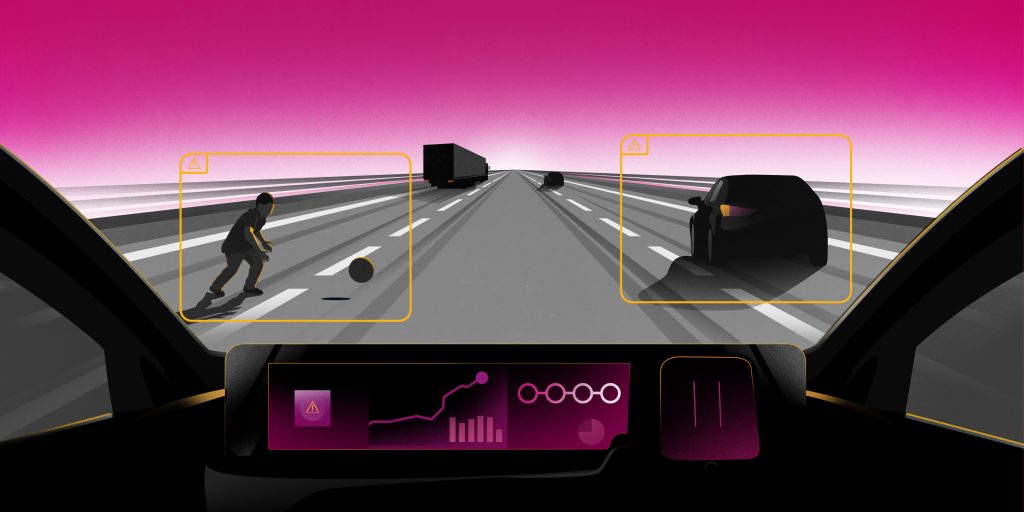Insight article

Visions of the Future: Driverless Cars
Friday, May 17th, 2019, Mountain View. It’s nearing midday in California, and a sweltering noonday sun is searing down on those in San Francisco and Mountain View alike.
You’re in your office, glad to be inside. You’ve spent the morning speaking to your colleague, Michaela, a talented young marketing executive, about your upcoming press conference. The future is here, you’ll say, introducing the public release of your first commercially-available driverless car. Sit back, and enjoy the ride. It’s about time.
This release, you’ll say, signifies another step towards swapping human labour for human leisure. Convenience, comfort, cheapness – we’re offering them all to you. After years of careful coding, of battles with legislators, of managing both public excitement and public anxiety, your vision of the future – finally – is here.
Saturday, May 18th, 2019, San Francisco. It’s nearing midday in California, and a sweltering noonday sun is searing down on those in San Francisco and Mountain View alike.
You’re in your car, glad to be inside. Your family are there too – your partner, and two children. No way were they going to let you take your first ride into the future without them. No way were you going to let them miss your first ride into the future. After all, when you were their age, this was science fiction, expressed only in the speculations of futuristic films and idle prophetic chatter.
You’re watching, both excited, and a little restless, as you slide smoothly down sunswept streets. It’s strange, after decades of having to indicate, to brake, to see, to be in the front seat of a car and have to do nothing but watch and wait to arrive. Yes, your driver’s instinct is leaving you a little restless – but above that restlessness is exhilaration as you calculate of the number of free hours you’ll now have, hours previously lost to road-watching.
You still road-watch a little, though: it’s habit. You feel sympathy, then shock, as you see a child to your left run, stop, point to the ice-cream van across the road, break away from their friend, begin to dash, unseeing, across the road.
You know there isn’t time to brake: you’re too close, and moving too fast. You know you couldn’t brake if you wanted to: convenience, comfort, cheapness – but choice? Not included.
You know you could swerve away, but there is a lorry hurtling down the road across from you. You swerve, and your family’s life is on the line. You know you couldn’t swerve if you wanted to: convenience, comfort, cheapness – but choice? Not included.
Visions of your future – rapidly – are here.
Monday, May 14th, 2018: It’s nearing midday in California, and a sweltering noonday sun is searing down on those in San Francisco and Mountain View alike.
You’re in your office, glad to be inside. Sipping ice-cold water, you take a deep breath. Today, you’re going to try and bring your vision of the future one step closer, by proving to the critics – governments fearful of losing popular support, the public fearful of the unknown, academics who see technology coming before ethical considerations – that, in the worst possible scenarios, the autonomous vehicles you’ve spent nearly a decade working on will make the right choice. A choice that will leave you able to sleep at night. After all: choice? Always included – and the moment to choose is now.
Since 2009, Google has been testing self-driving cars: a project that promises to transform the way we travel, and the way we live. In November 2017, after approximately three million miles of testing, Google’s driverless cars arm, Waymo, announced it was going to experiment with truly autonomous vehicles – ones without a safety driver on board.
In March 2018, a driverless Uber car struck a pedestrian while in autonomous mode – the first fatal crash involving a self-driving car and pedestrian in the US.
By 2020, Google hope to release a self-driving car available to the general public: a vision of the future with profound economic and ethical implications.
Automated cars will almost certainly make us safer. One death is perceived as an aberration, especially when placed alongside the 40,100 traffic deaths in the US alone last year.
Fewer deaths, fewer lapses, fewer tears – but also greater unrest when one does occur, perhaps. Human error is ethically uncomplicated in its inevitability, its lack of foresight. The detached determinism of an autonomous agent? Less so.
The streets of Tempe, Arizona won’t be the only ones that create moments where choice isn’t in the moment, moments where an algorithm will determine who lives, and who dies. This year, we try and envisage that future. This year, there is still choice.
We are The Storytellers. We exist to move more people to do great things through the power and influence of storytelling.
What story will move you and the people around you to do great things in 2018? Share your story with us.
